

1 Cool Tears Magazine July/August 2023 www.cooltears.com PLUS: • TICKS! A Comprehensive Guide to Tick Prevention • Leave No Trace: Leave What You Find • Upcoming Teardrop Gatherings • And Much More! Empowering Your Teardrop: A Deep Dive into Solar Panel Options for Tiny Campers
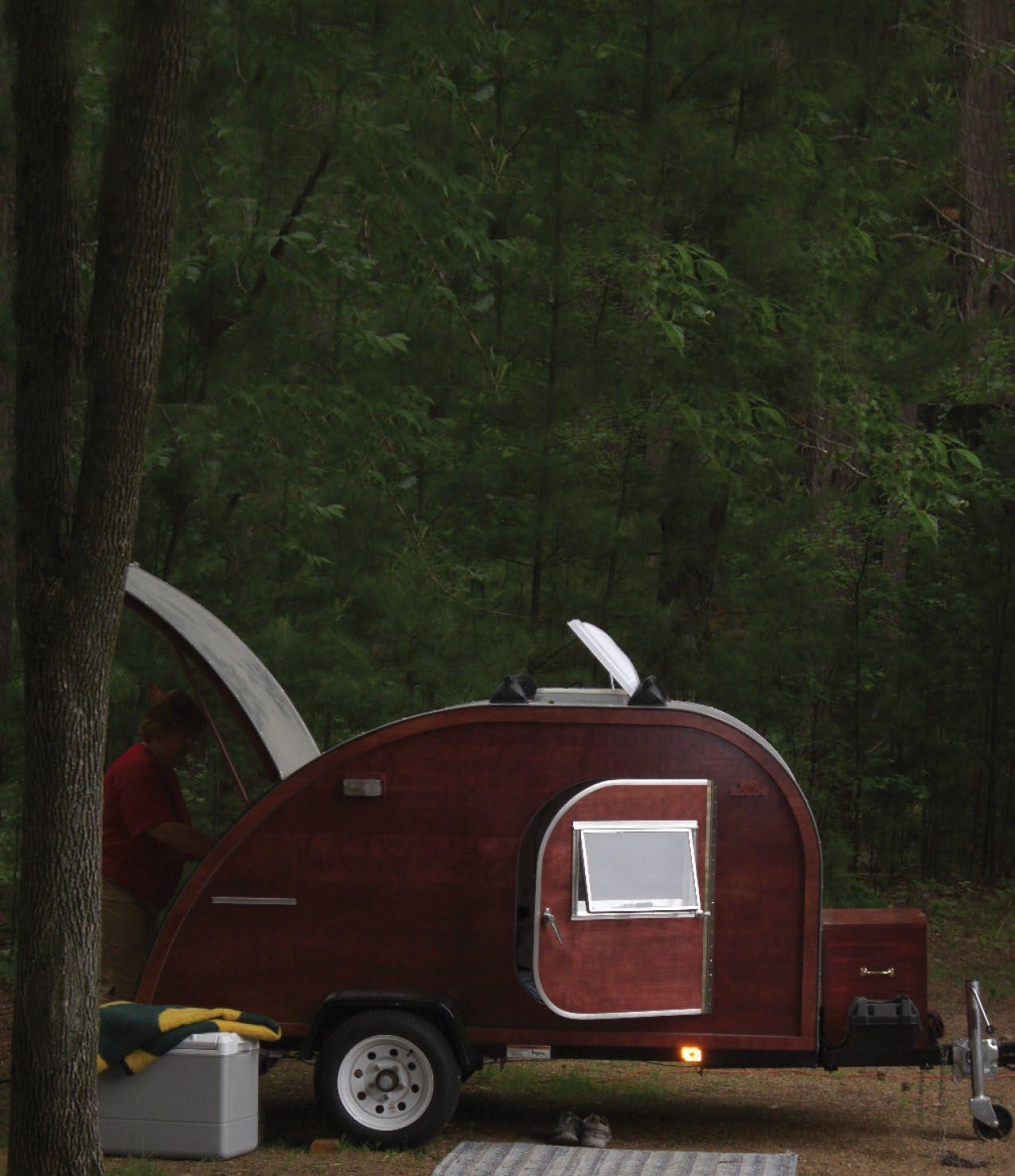

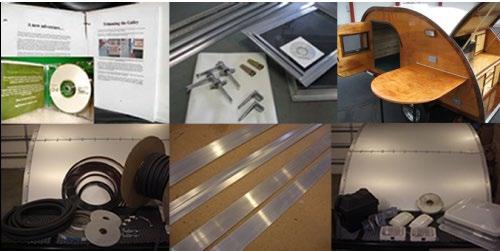
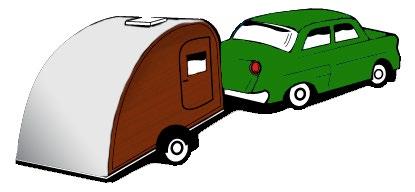
2 Cool Tears Magazine July/August 2023 Serious about building a teardrop camper? BIG WOODY CAMPERS 715-271-0465 | www.bigwoodycampers.com Handcrafted Custom Campers. Plans, kits, parts and accessories for the home builder! $103900 plus shipping
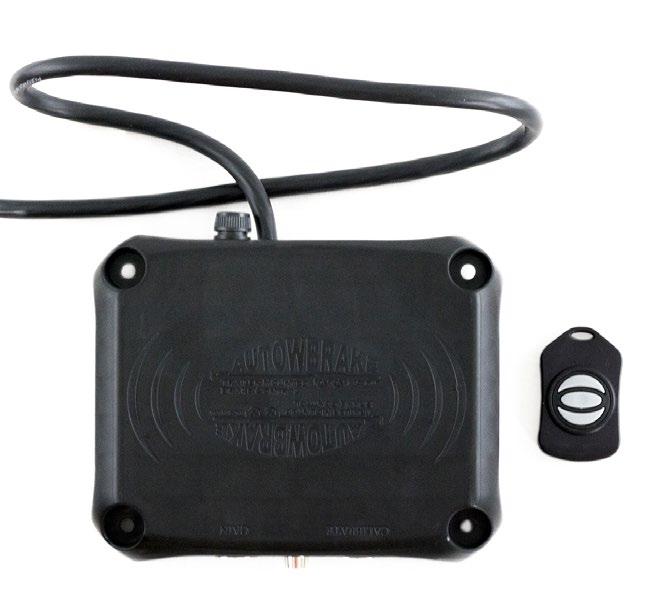


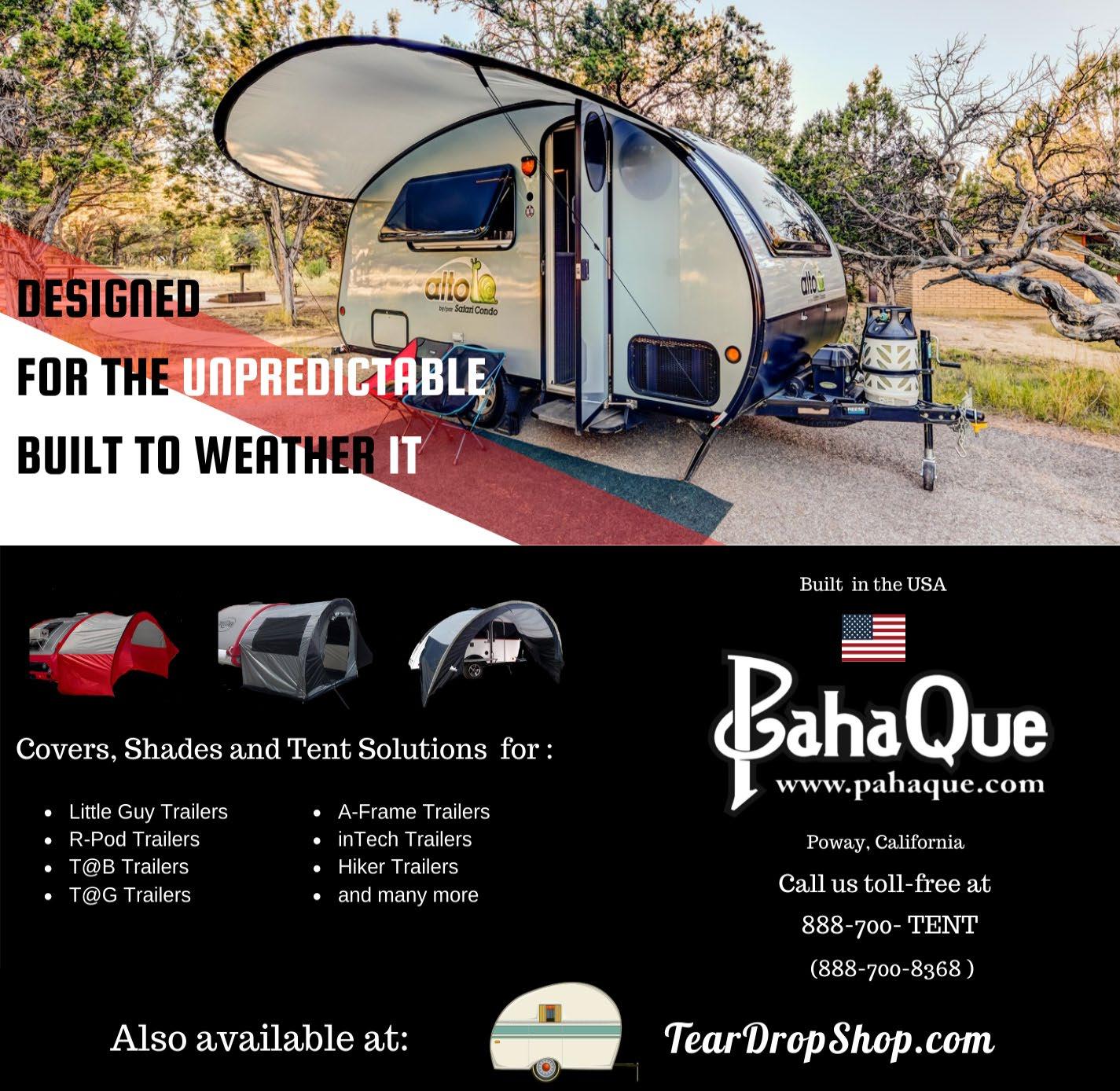
3 Cool Tears Magazine July/August 2023 The only electric brake control with nothing installed in the tow vehicle, 100% trailer contained. Period. HIT THE OPEN ROAD With Autowbrake on your trailer, just plug and tow. www.getautowbrake.com · getautowbrake.com
Editor


Lisa Adams
Contributing Authors

Anne Cox
© Copyright 2023 Cool Tears Magazine™ All Rights Reserved Cool Tears Magazine™ is a trademark. Written materials submitted to Cool Tears Magazine™ become the property of Cool Tears Magazine™ upon receipt and may not necessarily be returned. Cool Tears Magazine™ reserves the right to make any changes to materials submitted for publication that are deemed necessary for editorial purposes. The content of this publication may not be copied in any way, shape or form without the express permission of Cool Tears Magazine.™ Views expressed in the articles and reviews printed within are not necessarily the views of the editor, publisher, or employees of Cool Tears Magazine™.
Mailing Address: Cool Tears Magazine 51956 CR 215 Lawrence, MI 49064
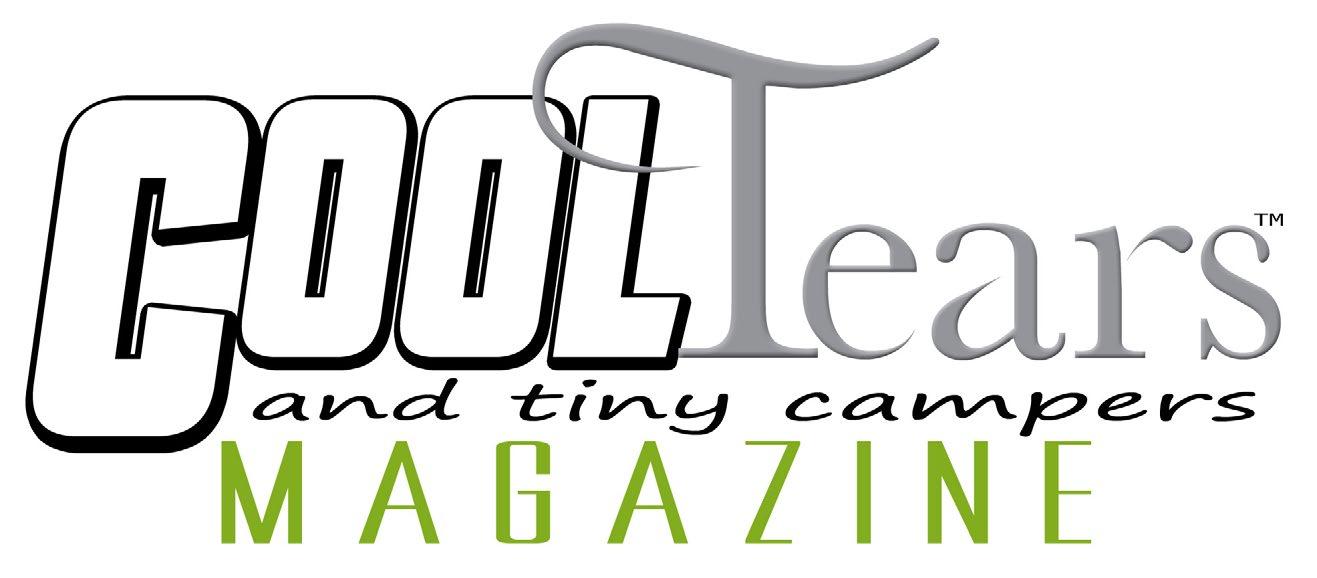
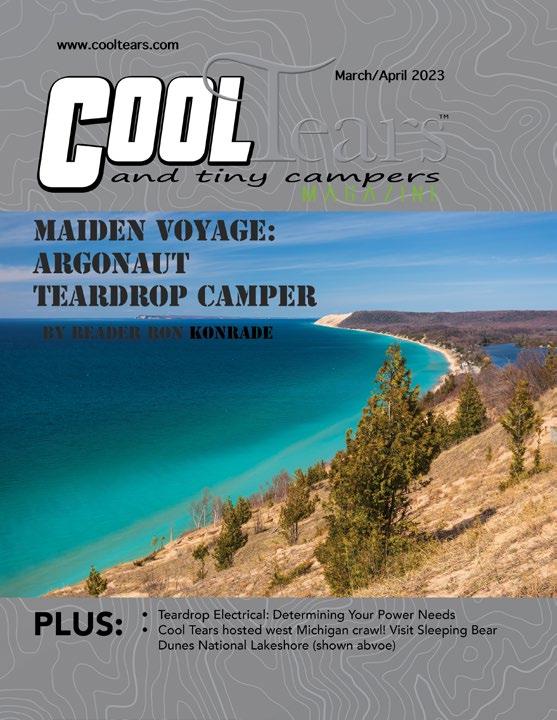


4 Cool Tears Magazine July/August 2023
KITCHEN ON WHEELS: CHOCOLATE DELIGHT Anne Cox 8 11 COVER STORY EMPOWERING YOUR TEARDROP: A DEEP DIVE INTO SOLAR PANEL OPTIONS FOR TINY CAMPERS Lisa Adams Vol. 11 No. 4 July/August 2023 Connect with us! LETTER FROM THE EDITOR Lisa Adams 5 TEARDROP GATHERINGS: AUGUST - SEPTEMBER 2023 Cool Tears Staff 19 PRESS RELEASES Cool Tears Staff 22 HOW TO SAFELY ENJOY THE OUTDOORS: A COMPREHENSIVE GUIDE TO TICK PREVENTION Lisa Adams 23 LEAVE NO TRACE - LEAVE WHAT YOU FIND: TEARDROP CAMPER'S GUIDE TO PRESERVING NATURE'S TIME CAPSULE Lisa Adams 37 FROM PURCHASE TO PAVEMENT: THE ROAD TO TEARDROP TRAILER REGISTRATION Cool Tears Staff 26 HARNESSING THE SUN: HOW TO CHOOSE AND SIZE YOUR SOLAR CHARGE CONTROLLER Lisa Adams 31
Letter from the Editor:

Hello Tiny Camper Enthusiasts!
Teardrop and squaredrop camping trailers stand out from the crowd whether you are at a gas station, campground, parking lot, or driving down the highway. We have to get used to people wanting to talk to us at the most inopportune time (setting up, tearing down, backing in, etc.) or just be ready with a friendly wave as you head to your destination.
As owners or renters of these tiny campers, we must be ready for a barrage of questions and comments. “Do you get claustrophobic”? “How do you get dressed”? “ “Where do the dogs (or kids) sleep?” “Where do you cook?” And last but not least, “Where is your bathroom”?

Teardroppers love their camping trailers, and I’m no different. I’m always willing to give nickel tours. Over the last year, I’ve had several people want to see our teardrop because they are contemplating purchasing one from the same manufacturer, but they often didn’t want to drive out west to see one first. Each time, I’ve let them poke around through the drawers and cabinets, climb on the bed to see if they “fit,” etc. I’ve talked about the features that are “nice to haves” versus “gotta haves” for us and have explained why we think so.
We’re on our second teardrop from the same manufacturer, so we’ve made some upgrades over the years, such as more cabinet space, a built-in stove versus one we had to carry separately, a 12-volt refrigerator versus cooler, a solar panel, lithium battery, and square versus round fenders. I love the look of the rounded fenders, but the square ones are so much more functional! I didn’t know that until we owned a teardrop for a while. I digress.
The point is that as teardrop or squaredrop owners, we should expect to be approached by people asking questions regardless of where we are. We’re all ambassadors of the tiny camping movement, and we should be supportive in providing them with the necessary information to make the right choice for them. I’m three for three! Everyone who has come to see our teardrop has purchased one from the same manufacturer.
As tiny camper ambassadors, be open to people curious about teardrops or squaredrop trailers. And let’s continue to

5 Cool Tears Magazine July/August 2023
Teardrop in the RV Hall of Fame lobby
grow our community!
Do you have a funny experience to share with our readers about an interaction at a gas station, grocery store, campground, etc.? Email me at Lisa@cooltears.com, and we’ll publish some of the best stories. n

Happy travels and stay safe
Live Tiny. Live Free.
Lisa Adams Editor Cool Tears Magazine™ Lisa@cooltears.com











7 Cool Tears Magazine July/August 2023 Now available on iOS and Android! http://teardropnation.com Connect with the Teardrop Community! Status Updates Share Photos Likes & Comments Campsite Check-Ins Review Campgrounds Connect With Campers THE APP FOR TEARDROPPERS! Visit www.teardropshop.com or call Toll Free: 1-844-834-5701 The Best Buying Experience and the Best Accessories for your Teardrop! + Plus new arrivals, daily deals and live chat with our accessory experts! 10x10 Cottonwood Shelter Side Mount Tent 10x10 Cottonwood XLT Teardrop Lock All Weather Cover T@B Tent
KITCHEN ON WHEELS CHOCOLATE DELIGHT

Trust me, if the thought of chocolate mousse makes your mouth water, you need to try this. Easy to make from portable, mostly shelf stable ingredients and healthier than the traditional cream based version.
I’ve shared that we have someone in our household who orders a lot of stuff online, right? Such a plethora of boxes, I started a lasagna gardening project to kill the poison ivy around the greenhouse, but that's another story.
Most days we make smoothies for breakfast so when a small rechargeable blender (a Blend Jet) showed up, I wasn't surprised but instead was skeptical that it would work. Then would I even want to use in a campground? Turns out the answer is "ye"s on both counts.
About the same time as the blender delivery, I attended our library Cookbook Club for Mediterranean night and was introduced to the most delicious chocolate dessert, so I immediately came home to recreate and now share with you.
3 ingredients and a blender, that’s it. It's so simple to make at home but what about when camping? You know I had to try it. Well, with my new gadget (bring along your home Ninja or blender) I whipped some up smooth chocolaty goodness. We eat well when camping but dessert had not been on the menu.
The universe expands sometimes in the most delicious manner. Try this vegan recipe and let us know what you think. ~
Anne Cox
Chocolate Delight:
• 3 ripe avocados
• 1/2 cup unsweetened cocoa powder
• 3/4 cup Maple syrup (the real stuff) - or Agave syrup, honey, stevia syrup
Instructions:
• Cut the avocados in half, remove the pit,
and scoop out the flesh
• Blend all three ingredients until smooth, stir to mix, and then blend again.
This simple, three ingredient recipe makes a thick, whipped mousse. You can add a splash of milk (regular, oat, coconut, etc.) to thin slightly, if you prefer
8 Cool Tears Magazine July/August 2023



9 Cool Tears Magazine July/August 2023 Let us know what you think and if you have any ides for us to try! Reach out to Anne@cooltears. com


10 Cool Tears Magazine July/August 2023 Helinox: A Trusted Brand of Cool Tears since 2019
Empowering Your Teardrop:
A Deep Dive into Solar Panel Options for Tiny Campers
 By LISA ADAMS
By LISA ADAMS
Solar panels are becoming increasingly popular as more people seek clean, sustainable ways to power their homes, businesses, and campers. Today, we'll explore four types of solar panels - monocrystalline, polycrystalline, thin-film, and Amorphous Silicon (A-Si) - and discuss their pros and cons. We'll keep things as simple but informative as possible.
11 Cool Tears Magazine July/August 2023
Monocrystalline Solar Panels

Monocrystalline solar panels are made from a single, pure silicon crystal. They're the most efficient type, which means they can generate more electricity from the same amount of sunlight as the other types.
Pros:
• High efficiency: Monocrystalline panels can convert up to 22% of sunlight into electricity, making them the best choice for people with limited roof space.
• Long lifespan: These panels are built to last, with an average of 2530 years lifespan.
Cons:
• Higher cost: Monocrystalline panels are more expensive to produce and buy due to the complex manufacturing process and the high-quality materials used.
• Waste: The production process produces a lot of waste, which can concern environmentally conscious consumers.
Polycrystalline Solar Panels
Polycrystalline solar panels are made from multiple silicon crystals that are melted together. They're less efficient
than monocrystalline panels but also less expensive.
Pros:
• Lower cost: Polycrystalline panels are more affordable because their production process is more straightforward and creates less waste.
• Suitable for larger spaces: If you have a lot of roof space, these panels can still generate a decent amount of electricity at a lower price.
Cons:
• Lower efficiency: Polycrystalline panels convert 15-18% of sunlight into electricity, generating less power than monocrystalline panels.
• Shorter lifespan: These panels have a slightly shorter lifespan of around 25 years.
Thin-Film Solar Panels
Thin-film solar panels are made by applying a thin layer of photovoltaic material (like silicon, cadmium telluride, or copper indium gallium selenide) onto a backing material. They're the least efficient but are also the most affordable option.
Pros:
• Lowest cost: Thin-film panels are the most
12 Cool Tears Magazine July/August 2023
budget-friendly choice, making them popular for large-scale projects where cost is a significant factor.
• Flexibility: These panels are lightweight and flexible, which means they can be used on surfaces unsuitable for traditional panels.
Cons:
• Lowest efficiency: Thin-film panels only convert about 10-12% of sunlight into electricity, generating less power than the other types.
• Shortest lifespan: With a lifespan of around 10-15 years, thin-film panels last less time than the other options.
A-Si (Amorphous Silicon) Solar Panels
These panels are called "amorphous" because the silicon used in them is not in a crystal structure but spread out in a thin layer. This is why they're part of the thin-film family of solar panels.
Pros:
• Flexibility: A-Si panels are lightweight and can be made into different shapes and sizes. This makes them versatile and suitable for various applications, including curved surfaces or even clothing.
• Lower light sensitivity: These panels perform better than other types in lower light conditions, like on cloudy days, and can even absorb a broader spectrum of sunlight.
• Lowest cost: Like other thin-film panels, A-Si panels are typically cheaper to produce and purchase compared to
monocrystalline and polycrystalline panels.
Cons:
• Low efficiency: A-Si panels have lower efficiency rates, typically around 7-10%. This means they convert less sunlight into electricity, so you'll need more panels to generate the same amount of power as other types.
• Degradation: These panels experience an initial phase of fast efficiency loss in the first few months of operation, known as the Staebler-Wronski effect. After this initial drop, the degradation rate slows down.
• Shorter lifespan: Like other thin-film panels, A-Si panels have a shorter lifespan than monocrystalline and polycrystalline panels, often around 15-20 years.
Solar panels provide a promising clean, and sustainable energy generation solution. Each type of solar panel - monocrystalline, polycrystalline, thin-film, and A-Sihas advantages and disadvantages. Monocrystalline panels offer high efficiency and a long lifespan but come at a higher cost and generate more waste. Polycrystalline panels are more affordable and suitable for larger spaces, although they have lower efficiency and a slightly shorter lifespan. Thin-film panels are the most affordable and flexible option but have the lowest efficiency and shortest lifespan. A-Si panels, part of the thin-film family, offer versatility and better performance in low-light conditions, but they also have lower efficiency and a shorter lifespan. Ultimately, the choice of solar panels depends on individual needs, available space, budget, and environmental considerations. With ongoing advancements in technology
13 Cool Tears Magazine July/August 2023
and manufacturing processes, solar panels continue to evolve, offering increasingly efficient and cost-effective solutions for clean energy generation.
When choosing solar panels for your teardrop or other tiny campers, you must also decide between rigid, mounted, foldable, portable, and flexible or curved solar panels. All options have advantages and disadvantages, so let's explore the pros and cons of each to help you make an informed decision.
Rigid, Mounted Solar Panels
Rigid, mounted solar panels are permanently installed on the roof of your teardrop or other tiny campers. These panels are usually made of monocrystalline or polycrystalline cells, offering higher efficiency than most portable panels.
Pros:
• Continuous charging: Once installed, mounted panels will charge your teardrop or other tiny camper battery whenever the sun is shining, without any additional effort from you.
• Higher efficiency: Rigid panels usually have higher efficiency rates, which means they'll generate more power from the same amount of sunlight.
• Durability: These panels are built to withstand harsh weather conditions, making them a reliable long-term solution.
Cons:
• Installation: Rigid panels require professional installation, which can be time-consuming and costly.
• Limited mobility: Since they're permanently attached to your teardrop or other tiny campers, you can't move them around to find the optimal angle for sunlight exposure.
• Added weight: Rigid panels can be heavy, affecting your teardrop or other tiny camper's fuel efficiency and overall weight capacity.
Foldable, Portable Solar Panels

Foldable, portable solar panels are lightweight and easily transported and set up
wherever needed. They're typically made of thin-film or flexible monocrystalline cells.
Pros:
• Easy setup and storage: Portable panels can be easily set up and taken down, allowing you to store them when not in use.
14 Cool Tears Magazine July/August 2023
• Mobility: You can move these panels around to find the best angle for sunlight exposure, ensuring you get the most power possible.
• No permanent changes to a teardrop or other tiny campers: Since portable panels don't require permanent installation, you won't need to modify your teardrop or other tiny campers.
Cons:
• Lower efficiency: Portable panels typically have lower efficiency rates, so they may generate less power than rigid panels.
• Manual setup: You'll need to set up and take down the panels each time you want to use them, which can be time-consuming and inconvenient.
• Durability concerns: Portable panels may not be as durable as rigid panels, especially when exposed to harsh weather conditions.
Flexible or Curved Solar Panels
These panels can bend to fit the shape of your RV's roof. They are often made from less efficient thin-film cells or flexible monocrystalline cells.
Pros:
• Versatility: They can be installed on uneven or curved surfaces.
• Lightweight: They add less weight to your RV compared to rigid panels.
Cons:
• Lower efficiency: Like
portable panels, they might not convert sunlight into electricity as effectively as rigid panels.

• Durability: They may not withstand harsh weather conditions, as well as rigid panels.
Now that you know the pros and cons of each type of solar panel, let's look at the different forms they can take. As a quick reminder, solar panels come in a few flavors, mainly:
• Monocrystalline: These are made from a single, pure crystal structure. They are super efficient and durable but can be a bit more expensive.
• Polycrystalline: These are made up of lots of different crystals. They're less efficient than the monocrystalline ones, but they're usually cheaper.
• Thin-film: These are sheets of semiconductor material. They're easy to make and can be very cheap, but they're also less efficient than the crystalline types.
15 Cool Tears Magazine July/August 2023
• A-Si (Amorphous Silicon): This is a type of thin-film panel, but it's made with silicon atoms that aren't arranged in a regular crystal structure. They could be more efficient, but they're very easy to make and can even be flexible.
Here are the forms these panels can take:
• Rigid: These are your traditional solar panels. They're stiff and sturdy, best for long-term installations like on a roof.
• Foldable/Portable: These panels are lighter and more transportable. They can be folded up when unused, making them great for camping or other temporary setups.
• Flexible/Curved: These panels can bend to fit onto surfaces that aren't flat. They're a newer technology and still evolving.
Here's a table summarizing which panel types can come in which forms:

16 Cool Tears Magazine July/August 2023
So, most solar panel types can be rigid or foldable/portable. But only thin-film and A-Si can be flexible or curved. And remember, while flexible panels can be very cool and may fit your teardrop perfectly, they're often less efficient than the traditional rigid panels. The decision on what to use often depends on where and how you plan to use them.
Summary:
Rigid panels are remarkable for their high efficiency and durability but lack the adjustability of portable panels. Portable panels give you the most flexibility but require regular setup and might be less efficient. Flexible panels offer a lightweight, versatile solution but might have lower efficiency and durability, which might be sufficient since teardrops are typically not energy hogs. Your choice would depend on your specific needs, including how much effort you're willing to put into setup, your budget, and the physical characteristics of your teardrop or other tiny camper. g
Did you know that we have a teardrop for rent? There are still dates available for the summer and fall season. Click here to go directly to our rental link.

Note: We are located in southwest Michigan. Michigan was recently named one of the premier camping destinations in the country!

17 Cool Tears Magazine July/August 2023
Merchandise available from Bonfire

NOTE: One of the great things about having a digital magazine is the ability to link you directly to the products or services that you want to hear more about. Some of the links on our website or in the magazine are affiliate links where we earn a small commission on goods that you purchase. These commissions help us to continue to defray the costs of publishing this magazine. You may notice as you read through the magazine that if you put your mouse over any ad or hyperlink, the screen may flash briefly. You can click on that picture or hyperlink and it will take you directly to more information. We are not affiliates for everything that we link to.
Cool Tears also participates in the Amazon Services LLC Associates Program, an affiliate program designed to help small businesses like this to earn a small fee by linking products to Amazon that you may be interested in.

We appreciate your support. If you have any questions, don't hesitate to contact either of us at Lisa@ cooltears.com or Anne@cooltears.com
Harvest Hosts is a membership program that provides access to a network of wineries, farms, breweries, museums and other unique attractions that invite RVers to visit and stay overnight. Harvest Hosts now allows clamshell and teardrop trailers, but you may NOT use your outdoor cooking facility. Click the logo below to get 15% off the regular yearly price. We've stayed at breweries, wineries, farms, and art studios in our local area as well as across the country.

18 Cool Tears Magazine July/August 2023
August - September 2023 Teardrop, Squaredrop, and DIY Camper
Gatherings
 By COOL TEARS STAFF
By COOL TEARS STAFF
Cool Tears and Tiny Campers is hosting its first-ever tiny camper camping crawl along the beautiful west coast of lower Michigan! If you are planning to attend, send us an email at Lisa@cooltears.com or Anne@ cooltears.com. Click on our names to go directly to composing an email to us.
19 Cool Tears Magazine July/August 2023
Camping has long been cherished as a beloved pastime, allowing individuals to reconnect with nature and escape the confines of daily life. In recent years, a new trend has taken the camping world by storm: teardrop campers. These compact and versatile campers have gained significant popularity among outdoor enthusiasts seeking a unique camping experience.
For those who have embraced the teardrop camping lifestyle, attending gatherings with like-minded individuals opens up a world of possibilities. These meetups provide an invaluable opportunity to connect with fellow teardrop camper owners, exchange tips and tricks, and share the joy of camping in these specialized tiny campers. It's a chance to learn from one another and explore the diverse ways of maximizing the potential of your teardrop camper.
One of the most remarkable aspects of these gatherings is the strong sense of community and camaraderie they foster. Meeting people who share the same passion for teardrop camping can be an incredibly enriching experience. It allows you to connect with individuals who understand the unique joys and challenges of camping with a compact camper. Together, you can celebrate the freedom and adventure that teardrop camping offers.
As a dedicated team at Cool Tears, we strive to keep you informed about upcoming events and gatherings for teardrop camper enthusiasts. However, we recognize that we can't be everywhere at once. That's where you come in! We rely on the contributions of our community to help us discover new stories, uncover exciting events, and submit
articles that will captivate and inspire the broader teardrop camping community.
So, whether you're a seasoned teardrop camper owner or just starting your journey, keep an eye out for upcoming events and gatherings. These opportunities to connect with fellow enthusiasts can enhance your camping experience, ignite your sense of adventure, and create memories that will last a lifetime. Together, let's celebrate the joy of teardrop camping and build a vibrant community of like-minded individuals who share a passion for the great outdoors.
Check out these upcoming events!
August 3 - August 6, 2023
Buckeye Chapter, Summer Gathering Deer Creek State Park, Monroe Township, Ohio
Liberty Bell Chapter, Summer at Knoebel’s, Knoebels Amusement Resort, Elysburg, Pennsylvania
August 6 - 12
Cool Tears Crawl in West Michigan
August 10 - 13
New England’s Annual August Gathering, Waters Edge Family Campground, Lebanon, Connecticut
Land of Lincoln Tearjerkers, Fisherman’s Corner, Hampton, Illinois
August 19 - 23
Southern Ontario, Lafontaine and Awenda
20 Cool Tears Magazine July/August 2023
Gathering, Awenda Provincial Park, Tiny, Ontario, Canada
August 24 - 27
Hawkeye Chapter, Wandering Around the Wilderness, Pammel State Park, Winterset, Iowa
Liberty Bell and Buckeye Chapters “On the Border Gathering,” Pymatuning State Park, Andover, Ohio
August 25 - 27
Heartland Tearjerkers, Fabulous Float Trip, Pulltite Campground, Salem, Missouri
September 7 - 10
Heartland Tearjerkers, Table Rock Lake State Park, Branson, Missouri
Land of Lincoln Tearjerkers, Lowden State Park, Oregon, Illinois
September 7 - 12
Redwood Rendezvous III, Van Duzen County Park, Carlotta, California
September 8 - 10
Southern Ontario Chapter, Fall Gathering, Presqu’ile Provincial Park, Brighton, Ontario, Canada
Camping on the River with Jay, Northern Sites on the River Campground, Beaverton, Michigan
September 8 - 22
Pacific Northwest Chapter, 2023 Fall Crawl,
Alfred A Loeb State Park, Brookings, Oregon
September 13 - 17
Cross Roads of America 2023, Whitewater State Park, Liberty, Indiana
September 14 - 17
Carolina’s Chapter, End of the Summer by the Lake, Kerr Lake State Recreation Area, Henderson, North Carolina
HTC-E5 (Hiker Trailer Event), Dale Hollow Lake State Resort Park, Burkesville, Kentucky
September 15 - 17
Lone Star Chapter City of Hico’s Bosque River RV Park, Hico, Texas
September 21 - 25
Sooner State Chapter, Beginning of Fall Gathering, Lake Thunderbird State ParkLittle Axe Area, Norman, Oklahoma
September 22 - 24
Walk the Winds, Yellowstone Chapter at New Fork Group Campground, Wyoming
July 27-30
Chesapeak Bay Chapter, Janes Island State Park, Crisfield, Maryland
September 28 -
October 1
Dixie Chapter 2023 Fall Gathering, Mistletoe State Park, Appling, Georgia g
21 Cool Tears Magazine July/August 2023
nuCamp Announces First National Sales Event

Sugarcreek, Ohio. June 27, 2023 – nuCamp, a leading manufacturer of high-quality teardrop trailers and truck campers, is excited to announce its inaugural nuCamp National Sales Event.
The event will kick off on Friday, June 30th and run through July 17th, 2023. During the nuCamp National Sales Event, customers will receive an instant rebate of $1,500 USD off of any new, instock nuCamp teardrop trailer, Cirrus truck camper, or Barefoot travel trailer.
"We are excited to offer the opportunity to save big on our high-quality teardrop trailers and truck campers during this National Sales Event," said Scott Hubble, CEO of nuCamp. "We believe that everyone should have the chance to experience the freedom and adventure that comes with RV travel and the communities within it. The nuCamp National Sales Event makes our industry leading products accessible to even more consumers throughout North America. In this current environment, people are shopping for a deal - and now is the time to cash in.”
Every nuCamp dealer across the US and Canada will be participating during this special event. Customers interested in taking advantage of this promotion are encouraged to visit their local nuCamp dealer.
About nuCamp
nuCamp manufactures the highest quality teardrop trailers, teardrop campers and truck campers available on the American market. Our recreational vehicle and trailer products are the result of extensive research and development, customer feedback, and the fusion of technology and old-world craftsmanship. The dedicated craftsmen and women who work at the nuCamp facility in Sugarcreek,Ohio, are committed to the principles of simplistic design, high-quality fabrication, and fanatical customer support. nuCamp is the world’s largest manufacturer of teardrop trailers.
22 Cool Tears Magazine July/August 2023
FOR IMMEDIATE RELEASE
How to Safely Enjoy the Outdoors: A Comprehensive Guide to Tick Prevention
 By LISA ADAMS
By LISA ADAMS
As the golden rays of summer light up our forests and grasslands, many of us are eager to explore the great outdoors. Whether it's a weekend camping trip or a picnic in the park, one must be mindful of a small creature that can significantly impact our health - the tick. Notably known for transmitting Lyme disease, these tiny parasites can add an unexpected twist to your outdoor adventures. As we approach the height of camping season, understanding how to protect yourself from ticks becomes increasingly essential.
23 Cool Tears Magazine July/August 2023
Despite their small size, ticks, which are part of the arachnid family and not insects, carry quite a punch. They can be found all over the United States and are commonly located in grassy, bushy, or wooded areas. As we venture out into nature, we unwittingly enter their domain, making us and our pets potential hosts.
But fear not, as the risk of tick bites can be mitigated with a little bit of knowledge and preparation. Ticks can't fly or jump; they rely on us walking into them. This means the

tick medication up to date. There are some topical applications as well as oral.
Mindful camping also plays a role in prevention. When setting up camp, choose sun-exposed spots away from tall grasses, as ticks are less likely to inhabit such areas. A well-managed campfire can also act as a deterrent for these pesky creatures. It is considered a deterrent for ticks because it creates a barrier of heat and smoke. Like many small creatures, ticks are deterred by smoke and high temperatures. Therefore, the area around a campfire will likely be a tick-free zone.
first line of defense in preventing tick bites is what we wear. Dressing in long pants and long-sleeved shirts minimizes the amount of exposed skin for ticks to latch onto. Tuck your pants into your socks and your shirt into your pants for added protection. Light-colored clothing will also make it easier to spot any ticks before they creep onto your skin.
A second layer of protection comes from the effective use of insect repellents. Products with DEET or picaridin are known to ward off ticks. Alternatively, clothes and camping gear can be treated with products containing 0.5% permethrin, a popular insecticide. Always remember to use these products as instructed for safe and effective use. Keep your pet's
However, it's crucial to remember that a campfire is not a guaranteed method of tick control and doesn't replace the need for personal precautions. Ticks may still inhabit the cooler, undisturbed areas around the campsite, especially in tall grasses, leaf piles, or brush. Therefore, a campfire should be considered an extra measure in addition to wearing protective clothing, using tick repellents, performing regular tick checks, and choosing a sun-exposed and tickunfriendly campsite.
The need for vigilance continues once you're suitably attired and your campsite is set up. Regular tick checks are paramount, particularly in areas such as the underarms, behind the knees, the groin, and the hairline. Taking a shower or bath within two hours of coming indoors can help wash away unattached ticks and provide a perfect opportunity for a thorough tick check.
Despite all precautions, tick bites can still occur. In such instances, fine-tipped tweezers should be used to grasp the tick by the head
24 Cool Tears Magazine July/August 2023
as close to the skin as possible and gently pull it upwards. Cleaning the area and your hands with rubbing alcohol or soap and water afterward is essential.
Ticks can transmit over 14 diseases to humans, with Lyme disease being the most prevalent. This disease can severely affect the joints, heart, and nervous system, and signs often include a rash, fever, chills, aches and pains, headache, and fatigue. However, it's crucial to note that not all tick bites lead to disease.
Although there is no vaccine for humans against Lyme disease, there's a silver lining on the horizon. Major pharmaceutical companies like Pfizer and Moderna are actively working on developing vaccines, providing hope for a future where enjoying the outdoors can be less worrisome.
Summary:
The summer beckons us to enjoy the beauty and tranquility of the great outdoors, but
it also brings a heightened risk of tick encounters. Despite this, don't let these tiny arachnids deter you from seizing the joy of nature. Your outdoor adventures can remain tick-free with the correct information, careful preparation, and vigilance. While we look forward to the development of vaccines for added protection, your personal tick defense, consisting of suitable clothing, mindful campsite selection, effective use of repellents, and regular tick checks, remains your strongest armor. Remember, a little caution goes a long way in ensuring that your camping memories are filled with the warmth of the campfire and not the irritation of tick bites.
Stay informed about the latest prevention strategies and tick-borne diseases through reliable sources like the Centers for Disease Control and Prevention (CDC) or your local health department. Stay informed, stay safe, and let the beauty of nature continue to inspire and rejuvenate you.
Happy camping, and stay tick free! g

25 Cool Tears Magazine July/August 2023
From Purchase to Pavement: The Road to Teardrop Trailer Registration
By COOL TEARS STAFF
While camping at a huge Michigan state park recently, I met a young couple renting a teardrop trailer for the weekend. We chatted briefly, and I gave them my contact information.
A few days later, the young woman texted me that they would be purchasing a used teardrop in the coming week! I was so excited for them. She asked my advice on things to be aware of for the registration and license plates. I was happy to help!
I'm sure each state has its requirements for registering, titling, and purchasing license plates. But here are a few things to keep in mind.
You must gather the necessary paperwork from the seller to ensure you can get a license plate for your teardrop trailer in Michigan. Here are the typical documents you should obtain:
• Certificate of Origin (CO): This document is proof of ownership issued by the manufacturer or dealer. It contains essential details about the trailer, such as the make, model, vehicle identification number (VIN), and date of manufacture. If you're buying a used teardrop or squaredrop manufactured by a company, ask the seller to provide these details. If they

26 Cool Tears Magazine July/August 2023
cannot, call the manufacturer, provide them with the VIN or trailer ID number, and see if they can send you a duplicate copy.
• Bill of Sale: This document outlines the transaction details between you and the seller, including the purchase price, date of sale, and signatures of both parties. It helps establish ownership and provides a record of the transfer of the trailer.
• Title or Previous Registration: If the teardrop trailer has been previously registered in another state, ensure that the seller provides you with the title or the current registration documents. This will help establish the trailer's history and facilitate the registration process in Michigan. In the state of Michigan, if one or the other of these documents is unavailable, they will not allow you to register the trailer for a number of years. They do this because many campers are stolen yearly and resold to trusting individuals. But unfortunately, the Secretary of State will not issue a new title or registration until they are sure that no one is looking for their lost trailer.
• Lien Release (if applicable): If a lienholder is listed on the title or previous registration documents, ensure the seller provides a lien release document indicating that any existing liens have been satisfied.
• Valid Identification: The seller should provide a valid identification document, such as a driver's license or passport. This helps confirm the seller's identity and ensures the transaction's legitimacy.
• Trailer weight: Note that many states need to know the trailer weight. If you purchase your trailer from a manufacturer, this should be noted on the purchasing documents. If you want to register your DIY trailer, use a CAT scale to get the official weight. In Michigan, any trailer less than 2500 pounds is only registered, but anything over must also be titled. Other states have rules about when trailer brakes are required based on the trailer's weight.
Remember, it's essential to consult with your state's Secretary of State (DMV or BMV, Department of Motor Vehicles, Bureau of Motor Vehicles, respectively) office or visit their website to verify the specific requirements for registering a teardrop trailer. They can provide the most up-to-date information and guide you through the process. g
27 Cool Tears Magazine July/August 2023
“I absolutely love this trailer, Nathan did such an amazing job delivering exactly what I asked for. He was really responsive and kind, and I left really happy with the work.”


























“Nathan at second wind trailers was a dream to work with! From the second I inquired about getting a freedom trailer made by him, he was very informative and friendly. He kept me in the loop every step of the way by sending pictures and videos of the build. It was such a cool experience seeing it being built from the ground up”








28 Cool Tears Magazine July/August 2023 TWO UNIQUE FORMULAS www.SecondWindTrailers.com DESIGN • BUILD • EXPLORE
FREEDOM The FOLLOW US ONLINE: CHECK OUT MORE ON OUR WEBSITE: SCAN THIS TO SEE MORE I ABSOLUTELY LOVE
SPECIAL EDITION! CUSTOMIZE YOUR FREEDOM Every Single Trailer We Build Is A Work Of Art! ‘GLAMPING’ OVERLAND STYLE
KORI NATHAN GRACE
THIS TRAILER!







29 Cool Tears Magazine July/August 2023 OK SCHOONERS



Harnessing the Sun:

How to Choose and Size Your Solar Charge Controller
By LISA ADAMS
Solar charge controllers are essential components of a solar power system, as they help manage the flow of electricity between solar panels and batteries. There are two main types of solar charge controllers whose primary purpose is to regulate the voltage passed to the battery from the solar panels: PWM (Pulse Width Modulation) and MPPT (Maximum Power Point Tracking). First, let's break down the differences between these two types in simple terms, and then we'll dive into how to size your charge controller to your solar panels and battery.
31 Cool Tears Magazine July/August 2023
PWM (Pulse Width Modulation) Charge Controllers
PWM charge controllers are the simpler and more affordable option. They work by adjusting the power flow from the solar panels to the batteries.
Pros:
• Affordability: PWM controllers are generally less expensive, making them a good choice for smaller budgets.
• Simplicity: They have fewer components, which makes them easier to understand and maintain.
Cons:
• Lower efficiency: PWM controllers can't make the most of the available sunlight, so they might not be as efficient at charging your batteries as MPPT controllers.

• Limited flexibility: They may not work well with solar panels and batteries with different voltage levels.
MPPT (Maximum Power Point Tracking) Charge Controllers
MPPT charge controllers are more advanced and can make better use of the available sunlight. They work by constantly finding the best combination of voltage and current to get the most power from your solar panels.
Pros:
• Higher efficiency: MPPT controllers can be up to 30% more efficient than PWM controllers, which means they can charge your batteries more effectively.
• Flexibility: They can handle solar panels and batteries with different voltage levels, making them more versatile for various solar setups.
Cons:
• Higher cost: MPPT controllers are more expensive than PWM controllers, so there might be better options for tight budgets.
• Complexity: They have more components and can be harder to understand and maintain.
In summary, PWM charge controllers are a more affordable and straightforward option but may not be as efficient as MPPT controllers. On the other hand, MPPT charge controllers offer higher efficiency and more flexibility but can be more expensive and complex. The best choice for you will depend on your budget, solar system size, and energy needs.
32 Cool Tears Magazine July/August 2023
Lithium battery considerations
When charging lithium batteries, an MPPT (Maximum Power Point Tracking) charge controller is generally better than a PWM (Pulse Width Modulation) controller.
Lithium batteries, like lithium-ion or lithium iron phosphate (LiFePO4), have different charging requirements than traditional leadacid batteries. They are more sensitive to voltage and current levels during charging and require a precise charging profile to ensure their longevity and optimal performance.
MPPT charge controllers are more advanced, offer higher efficiency, and provide greater flexibility in managing the charging process. They can accurately adjust the charging voltage and current to match the specific
requirements of lithium batteries, ensuring that they are charged safely and efficiently.
Some key advantages of using an MPPT charge controller for lithium batteries include the following:
• Higher efficiency: MPPT controllers can extract more power from your solar panels, providing faster and more efficient charging for your lithium batteries.
• Better battery management: MPPT controllers can precisely manage the charging process, protecting your lithium batteries from overcharging or undercharging, which can prolong their lifespan.
• Compatibility: Many MPPT controllers are designed to be compatible with different types of batteries, including lithium batteries, and can be easily configured to suit their specific charging needs.
While PWM charge controllers can be used with lithium batteries, they offer different efficiency and precision in managing the charging process. For example, a lithium battery may need over 14V to effectively charge, but a PMW charge controller may not be capable of that output. Therefore, if you're using lithium batteries in your solar system, investing in an MPPT charge

33 Cool Tears Magazine July/August 2023
controller is recommended to ensure optimal performance and longevity of your batteries.
How to size a charge controller to your battery/ solar panels
Alright, let's dive into this!
You'll need a solar charge controller if you want to use solar power for your teardrop. This device is a big deal because it keeps your battery (or batteries) safe and ensures they last longer. It's a manager that keeps an eye on all the energy flowing from your solar panels to your batteries so they don't get too much or too little power.
Now, picking the right size of a solar charge controller is like buying shoes - you need to get the size that fits perfectly. But, instead of your shoe size, you'll need to know two things: how much energy your solar panels can produce and what type of battery you're using.
Step 1: Know Your Solar Panel Output
The first thing you need to know is the maximum output of your solar panel system. This is usually measured in watts (W). It's like learning how much juice you can squeeze from your panels in one go. You add up all their max outputs if you have more than one solar panel.
For example, if you have two solar panels, each capable of producing 100W, your total power output would be 200W (100W times 2).
Step 2: Determine Your Battery Voltage
Next, you need to know your battery bank's voltage. This is typically measured in volts (V).
It's like knowing the "size" of the cup you're pouring that solar juice into. Most teardrop and other RV systems use 12V battery banks.
Step 3: Calculate the Minimum Amperage
Now that we know our solar power (in watts) and our battery voltage (in volts), we can calculate the minimum current our charge controller needs to handle, measured in amps (A).
We do this by dividing our solar power by our battery voltage, which can be remembered as the formula: Amps = Watts ÷ Volts
So, in our example, if we're using a 12V battery system, we would do the math like this: Amps = 200W ÷ 12V = approximately 16.67A
We would need a solar charge controller to handle at least 16.67 amps.
Step 4: Add a Safety Margin
Just like you wouldn't fill a cup to the brim with hot coffee (because you might spill and burn yourself), you don't want to push your solar charge controller to its absolute limit. So, it's good to add a safety margin.
A common practice is to add 25% to the amperage we calculated above. That means our final number would be: Safety Amperage = 16.67A * 1.25 = approximately 20.8375A
So, in this example, you should get a solar charge controller rated for at least 20.8375 amps. If you only have a 100W solar panel with a 12-volt battery, then a 10A charge controller would suffice.
34 Cool Tears Magazine July/August 2023
Remember, getting a controller that's a little bigger than you need rather than one that's too small is better. It's like getting shoes - having a little extra room is much more comfortable than having your toes squished!
And there you go! You've successfully sized a solar charge controller for your needs. Easy!
Now you're ready to make an intelligent, informed choice about your solar power system.
Here is a list of the most popular MPPT and PMW charge controllers. You can click on the text of each controller to be taken to more information.
• Victron Energy SmartSolar MPPT 100V 30 amp 12/24-Volt Solar Charge Controller (Bluetooth)
• Victron Energy SmartSolar MPPT 100V 20 amp 48-Volt Solar Charge Controller (Bluetooth) (works with 12/24-Volt as well)
• Renogy Solar Charge Controller 12V/24V Auto MPPT with LCD Backlit Display w/ Temp Sensor Fit for Gel Sealed Flooded and Lithium Battery, Rover Elite 20A
• Renogy Wanderer Li 30A 12V PWM
Negative Ground Solar Charge Controller
Solar Panel Regulator w/ Temp Sensor Function Fit for Lithium, Sealed, Gel, and Flooded Batteries
• Renogy Rover 20A 12V/24V Auto DC Input
MPPT Solar Charge Controller Parameter
Adjustable LCD Display Solar Panel
Regulator fit for Gel Sealed Flooded and Lithium Battery
As we conclude, it is imperative to remember that solar charge controllers play a crucial role in ensuring the longevity and efficient operation of solar power systems. With PWM (Pulse Width Modulation) and MPPT (Maximum Power Point Tracking) as the two main types, your choice should be based on the balance between budget, efficiency, system size, and the specific energy needs you have. With lithium batteries, the MPPT charge controller emerges as the preferred option, offering more efficiency, precision, and overall better battery management. However, a vital part of the process is sizing your charge controller correctly to your solar panels and battery.
By following the steps outlined above, you'll be well-equipped to make an informed decision that optimizes your solar power system. Explore the listed popular MPPT and PWM charge controllers to find one that fits your needs best. The future of energy is in your hands—let's make it sustainable and efficient! g
35 Cool Tears Magazine July/August 2023


36 Cool Tears Magazine July/August 2023
Leave No Trace - Leave What You Find:

Teardrop Camper's Guide to Preserving Nature's Time Capsule
By LISA ADAMS
Among the growing population of outdoor enthusiasts, teardrop campers hold a unique position. These adventurers, unhindered by the size limitations of conventional RVs, relish the freedom to traverse the backroads and explore the tucked-away corners of Mother Nature's vast expanse. Yet, alongside the excitement and solitude that these jaunts offer comes the responsibility to safeguard our planet's delicate ecosystems. The adage, 'Take only photographs, leave only footprints,' has never been more relevant.
37 Cool Tears Magazine July/August 2023
Adherence to the 'Leave No Trace' (LNT) principles is desirable and indispensable to preserve the environment for future generations. In this issue, we tackle the fourth principle of the LNT ethic: Leave What You Find.

Much of the allure of teardrop camping lies in its ability to immerse us in nature, to bring us face-to-face with unspoiled landscapes, untouched flora, and fauna. It is common to stumble upon a striking rock formation, a vibrant patch of wildflowers, or a charming bird's nest during one's travels. The temptation to pocket a small keepsake might seem innocent enough, but the ramifications can be far more significant than we realize.
Leaving what you find is a principle rooted in respect—for the environment, other campers, and future generations. It is about understanding the interconnectedness of ecosystems, where even the slightest change can upset the balance.
For instance, a rock removed from its original location might have been home to tiny organisms or a critical part of the local watershed. Picking a bouquet of wildflowers may disrupt pollinators' feeding patterns and affect local biodiversity. Furthermore, not only is it illegal to disturb archaeological and historical artifacts, but it also robs future visitors of the chance to witness our shared heritage.
Invasive Species
Teardrop campers are uniquely poised to champion the cause of 'Leave What You Find.' Their compact size limits the disruption to the natural environment, and their often
off-grid camping style allows them to engage intimately with the surroundings. But the same small footprint that gives them their edge also makes it crucial to be particularly conscious of their influence on the environment.
One of the most pressing issues related to the 'Leave What You Find' principle is the spread
of invasive species. When introduced into new ecosystems, these non-native species can wreak havoc on local environments and economies. They travel on our clothing, camping gear, pets, and even the tires of our campers. Regular inspections and thorough cleaning of equipment, footwear, vehicles, and pets are essential to curbing the spread of invasive species. Also, adhering to local guidelines regarding invasive species and sourcing local firewood helps protect the diverse ecosystems we love to explore. We must be particularly conscious of our influence on the environment.
38 Cool Tears Magazine July/August 2023
Hammocks and Clotheslines
Using hammocks and clotheslines while camping can add comfort and convenience. We love setting up our hammocks while camping. They're great for a quick nap, reading a book, or relaxing in the sun or shade. We prefer to use our roof rack or an awning pole as a clothesline but take a quick glance at most campgrounds, and you'll see clotheslines at many sites. Hammocks and clotheslines are perfectly acceptable as long as the campground allows them; however, ensuring that these practices align with the 'Leave What You Find' principle is essential.
Hammocks
Hammocks continue to gain popularity for their minimal footprint and exceptional comfort. Still, if not done mindfully, it can damage trees and vegetation, potentially causing long-term harm to local ecosystems.
To align hanging a hammock with the 'Leave
What You Find' principle, consider these guidelines:
• Use Hammock Straps: Wide, tree-friendly straps distribute weight more evenly than ropes, mitigating the risk of damaging tree bark or altering growth patterns.


• Choose Trees Wisely: Opt for sturdy, live trees that can support your weight without harm. Avoid saplings, dead trees, or trees hosting nests or burrows.
• Leave No Trace: Never carve or damage the tree bark to hang your hammock.
• Keep an Eye on the Ground: Avoid
39 Cool Tears Magazine July/August 2023
setting up over delicate undergrowth, small plants, or animal homes. The goal is to leave the ground beneath you as undisturbed as when you arrived.
Clotheslines
Clotheslines, while convenient for drying clothes or hanging gear, can also impact the environment if not used thoughtfully. Here are some
ways to minimize your impact:
• Use Existing Infrastructure: Many campsites have established poles or lines for this purpose. Make use of these


40 Cool Tears Magazine July/August 2023
facilities when available.
• No Damaging Fasteners: Avoid using nails or damaging fasteners on trees. Like hammocks, opt for straps that won't harm tree bark.
• Disassemble After Use: Take it down once you're finished using the clothesline. Leaving it up could present hazards for local wildlife and negatively impact the aesthetics of the natural environment.
Incorporating these techniques ensures that using hammocks and clotheslines doesn't contradict the principle of 'Leave What You Find.' It demonstrates how minor adjustments allow us to enjoy the amenities we're accustomed to while respecting and preserving the environment. And it's this balance between enjoyment and conservation that forms the essence of responsible camping.
Here are 4 other points on how you can apply the 'Leave What You Find' principle:
1. Educate Yourself: Before your trip, familiarize yourself with the flora, fauna, and regulations specific to your destination. Understanding the ecosystem will help you appreciate it more and minimize your impact.
2. Resist the Temptation: Avoid picking flowers or moving rocks and twigs. Even if they seem unimportant, they're part of the ecosystem. Note that this includes rock cairns. Refrain from building additional cairns as this can firstly harm the environment, but
secondly, it could confuse hikers.
3. Document, Don't Disturb: Take pictures and sketches. They are the best souvenirs—light to carry and rich with memories.
4. Share Knowledge: Explain to fellow campers, especially children, the importance of leaving nature undisturbed. Please encourage them to adopt the same practices.
Summary
Following the 'Leave What You Find' principle necessitates a deeper understanding of our environment and a commitment to preserving its natural state. It requires us to resist the temptation of picking that beautiful flower, clean our gear diligently, and hang our hammocks and clotheslines mindfully. As we explore the world in our teardrop campers, we carry with us the responsibility to tread lightly to ensure that our adventures today do not compromise the experiences of those who come after us. After all, we are not just passing through these landscapes; we are passing through time, through nature's living, breathing time capsule. And we must ensure it remains unaltered and undisturbed. As teardrop campers, we have the opportunity and the responsibility to lead by example, fostering a camping culture that values conservation just as much as exploration. g
41 Cool Tears Magazine July/August 2023


42 Cool Tears Magazine July/August 2023
Photos submitted by Michele Graves.


43 Cool Tears Magazine July/August 2023
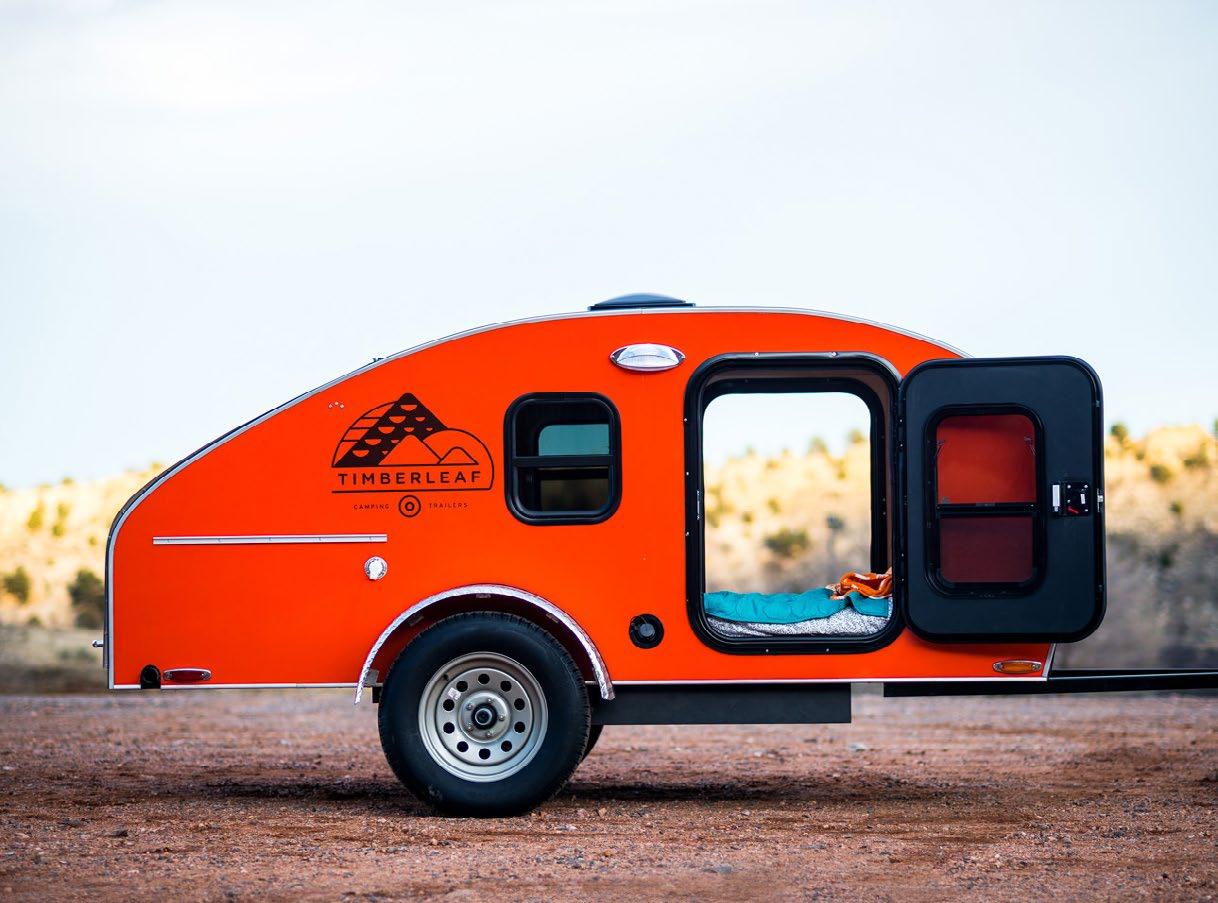






44 Cool Tears Magazine July/August 2023 www.timberleaftrailers.com Uncompromising quality. CLASSIC TEARDROP STYLE, MODERN AMENITIES QUALITY DESIGN & CRAFTSMANSHIP KESTREL STARTS AT $8,500 PIKA STARTS AT $14,500 CLASSIC STARTS AT $23,400 #cooltearsmag https://www.facebook.com/CoolTearsMagazine/ @cooltearsmag Tag your ‘grams with #cooltearsmag for a chance to be featured on our Instagram feed and in the magazine. Time for a new adventure. Videos of our adventures, reader builds, tips and tricks. Live tiny - Live free. Cool Tears wants to hear from YOU! Send us your story and if we use it, we'll give you $50! Anne@cooltears.com







































 By LISA ADAMS
By LISA ADAMS









 By COOL TEARS STAFF
By COOL TEARS STAFF

 By LISA ADAMS
By LISA ADAMS

































































